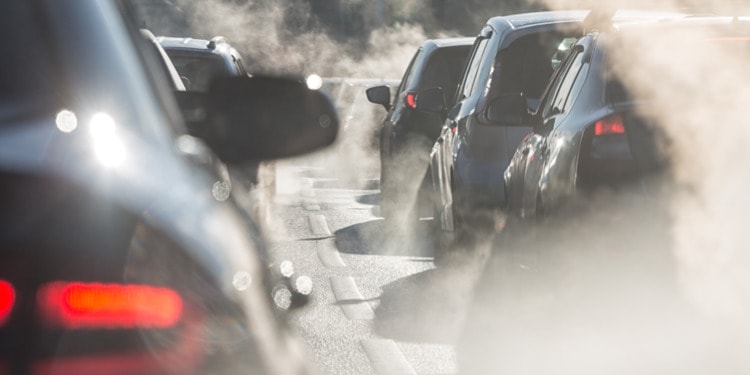In a significant stride toward greener mobility, the European Parliament and Council have struck a provisional agreement on new rules to curtail road transport emissions for passenger cars, vans, buses, trucks, and trailers.
The goal of the regulation, called Euro 7, is to facilitate the shift to clean mobility while maintaining the affordability of private and commercial cars for individuals and companies.
The European Union’s current limits on road transport emissions, known as Euro 6, apply to cars, vans, buses, trucks, and other heavy-duty vehicles, but don’t tackle secondary, non-exhaust emissions like microplastics from tires or particles from brakes. The current rules also don’t address the durability of batteries.
The Euro 7 proposal now takes both of these into account. Beyond just exhaust emissions, it acknowledges and addresses the broader environmental implications of road transport, including non-exhaust emissions and battery longevity.
For instnace, in addition to the Euro 6 rules, the Euro 7 regulation includes “new measures to limit particle emissions from tyres and brakes and to increase battery durability.” To ensure that they stay cleaner for the duration of their lives, vehicles will also need to adhere to the new criteria for a longer period of time.
In the EU’s words, vehicles will “stay cleaner for longer,” improving air quality.
“Through this deal, we have successfully struck a balance between environmental goals and the vital interests of manufacturers,” EU Rapporteur Alexandr Vondra said, adding:
“The aim of the negotiations was to ensure the affordability of new smaller cars with internal combustion engines for domestic customers and at the same time enable the automotive industry to prepare for the expected overall transformation of the sector. The European Union will now also be addressing emissions from brakes and tyres and ensure higher battery durability.”
Here’s how the EU plans to do this.
Stricter limits for exhaust emissions
While the emission standards for passenger cars and vans remain as they were in the Euro 6 regulation, there’s an intriguing shift in particle measurements. At the EU Parliament’s request, smaller exhaust particles (PN10) will now be under scrutiny, a more stringent approach than the earlier (and bigger) PN23 particles.
As to buses and trucks, the agreement introduces tightened emission limits, both in laboratory settings and real-world driving conditions.
“For buses and trucks, the agreed text includes stricter limits for exhaust emissions measured in laboratories (e.g. NOx limit of 200mg/kWh) and in real driving conditions (NOx limit of 260 mg/kWh), while maintaining the current Euro VI testing conditions,” the EU explains.
Secondary road transport emissions and battery durability
Unlike the Euro 6 rule, Euro 7 doesn’t stop at primary exhaust emissions. It sets forth emission limits for brake particles and emphasizes battery durability in electric and hybrid vehicles.
“The deal sets brake particles emissions limits (PM10) for cars and vans (3mg/km for pure electric vehicles; 7mg/km for most internal combustion engine (ICE), hybrid electric and fuel cell vehicles and 11mg/km for large ICE vans),” the EU writes.
It also introduces “minimum performance requirements for battery durability in electric and hybrid cars (80% from start of life to five years or 100 000 km and 72% up to eight years or 160 000km) and vans (75% from start of life to five years or 100 000 km and 67% up to eight years or 160 000km).”
Vehicle passports
A pivotal inclusion is the Environmental Vehicle Passport. This digital document, which is to be made available for every vehicle in the EU, will provide comprehensive details about a vehicle’s environmental performance at the time of registration. This will include:
- CO2 emissions;
- fuel and electric energy consumption;
- pollutant emission limits;
- electric range;
- battery durability.
The agreement also mandates automobile manufacturers to bolster their vehicles’ digital monitoring capabilities to thwart any attempts to tamper with emissions control systems, ensuring compliance and trustworthiness.
Related Articles: This Is How to Increase EV Uptake | Diesel and Petrol Cars to Be Banned From Stockholm Center | Sustainability Battle of Brands: Toyota vs. Tesla | The Future of Transport Is Electric | How Google Is Helping Cities Reduce Traffic Emissions
“Car manufacturers will have to design their vehicles so as to prevent tampering with emissions control systems through the digitalisation of automobile monitoring,” the EU says.
What’s Next?
The EU Parliament and Council now need to formally approve the deal for it to enter into force. For cars and vans, the regulation will begin to apply 30 months after it has entered into force; for buses, trucks, and trailers, it will apply 48 months after entering into force.
The Euro 7 regulation stands as a testament to the European Union’s commitment to fostering a greener, cleaner, and more sustainable future for road transport. As the world grapples with pressing environmental challenges, such legislative initiatives underscore the significance of collective action and innovation in shaping a better tomorrow.
Editor’s Note: The opinions expressed here by the authors are their own, not those of Impakter.com — In the Featured Photo: Road emissions. Featured Photo Credit: The European Space Agency.














